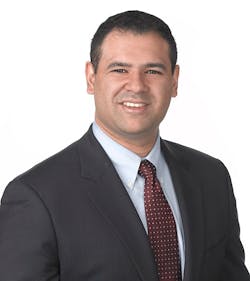Preparing the Grid for the Technologies of Tomorrow
DER includes those distribution-connected resources such as rooftop solar, customer-sited energy storage, electric vehicles, and flexible loads, which can provide services back to the grid in addition to performing their principal function as a customer asset. As an example, the principal purpose of electric vehicles is to transport people and things from place to place, but many electric vehicles spend only a few hours a day in transit. The rest of the time, they are often connected to the grid and are available for use as a grid asset. But the full utilization of DER requires them to be visible to grid operators, as well as controllable by grid operators.
Beyond grid modernization, grid operators and other electricity sector stakeholders face a decision about how deeply DER should be integrated into grid operation. A recent report from the Electric Power Research Institute (EPRI), in collaboration with the Smart Energy Power Alliance (SEPA), identifies four levels of DER integration:
Level 1 represents a DER-agnostic grid in which DER are relatively rare, small in size, and have a negligible impact on the grid. This was the state of most grids twenty years ago and, because of their low penetration, DER were rarely accounted into planning or operations.
Level 2 represents a DER-aware grid in which DER are relatively common and begin to have noticeable effects on grid operations. As a result, visibility and controllability of DER begin to be important, and grid operators must consider these resources in their planning and operations.
Level 3 represents a DER-leveraging grid in which grid operators, aggregators, customers, and other entities regularly use DER to provide services to increase grid reliability, reduce carbon emissions, or reduce operational costs. Level 3 requires grid operators to have visibility of DER and a significant level of control to ensure that DER are available when needed.
Level 4 represents a DER-dependent grid in which grid services provided by DER are integrated into regular planning and operation of the grid, turning the DER into mission-critical assets required for safe and reliable grid operations. At this level, grid operators must have full visibility and control of DER assets.
The four levels of integration may require different communications, management, and contractual arrangements between the grid operators, DER owners, and third parties such as aggregators. For example, in a Level 2 DER-aware grid, communication between the grid operator and the DER owner may be minimal, but grid services might still be provided by a 3rd-party aggregator. In a Level 4 DER-dependent grid, the grid operator may require more stringent contractual obligations on DER owners who choose to provide grid services, to ensure that the assets are available when needed. These obligations may include direct communications and controls links between grid operators and DER rather than routing of communications through aggregators.
Customer willingness to agree to grid communication and management requirements s may vary for different forms of DER. DER owners may be more willing to commit a stationary solar and storage system to grid services, for example, than an electric vehicle. Understanding true customer choices will be critical: creation of a DER-dependent grid may reduce upgrade costs but may require customers to contractually accept significant control requirements on their assets. Removal of DER systems for dependent models may result in compromised safe, reliable operation of the grid.
Depending on the penetration of DER and the willingness of stakeholders (including regulators, aggregators, and DER owners) to incorporate DER into grid operations and planning, the same grid operators may have different sections of its grid at different levels of DER integration. Fully integrated DER provide numerous benefits, including restoring critical power supplies after blackouts, even when transmission and distribution infrastructure is damaged and ensuring reliable power capacity in communities that often face intermittent power supplies due to production dips or other factors. Among the benefits of full DER integration, customers and utilities may experience load leveling, peak demand reduction, firm capacity, and renewable self-consumption.
The stakes of DER integration are high with potential to radically improve and transform grid operations. Therefore, integration of these assets should remain a key focus in current and future grid modernization planning. As more distribution assets reach and exceed their useful life, the time to have those conversations is now. At EPRI, we know careful planning and consideration is required to achieve and maximize DER potential to increase system reliability, increase customer satisfaction and accelerate decarbonization goals.
Haresh Kamath is director of Distributed Energy Resources & Energy Storage at EPRI.
About the Author
Haresh Kamath
Haresh Kamath is Director of Distributed Energy Resources & Energy Storage, EPRI.

